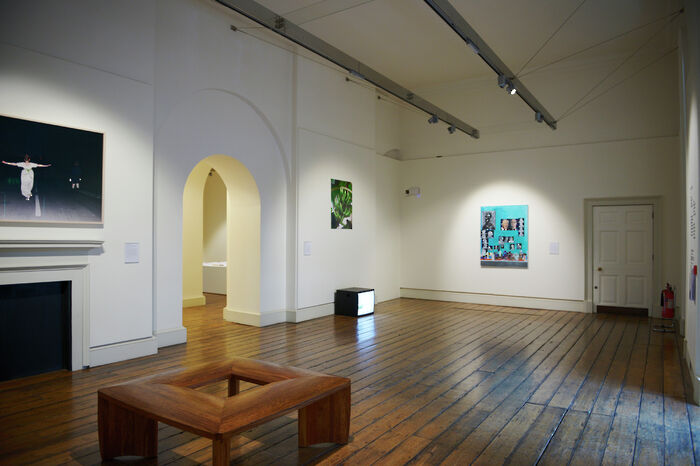Artist: Unknown puts art before origins
At Kettle’s Yard this summer, rootless creativity by unknown hands still makes for fascinating art

The aspect of Kettle’s Yard which always remains quite warmly disconcerting, and so always draws me back, is the decision not to display labels alongside the artworks within. Yes, there are books available in every room which reveal the pieces’ origins, but these are kept at a sufficient remove as to dispel the drive towards identification. (It averts, then, a common folly on visiting a gallery, that of going on a lengthy tour of small informational panels while the art itself is merely paid lip-service.)
Further, this namelessness frees the Yard from the dour chronology pursued by many galleries, lending itself to a space in which the art of wildly different decades, nations, circumstances can commingle, in a synthesis of all time up to the present.
Each fresh object evoked another of the chastening ways by which humanity casts people into indescribable oblivion.
I was thus a little disappointed to find that the items in the Artist: Unknown exhibition, somewhat absurdly, were labelled. The exhibition, open over the summer months, collects a room’s worth of objects from the University of Cambridge's museums and collections, employing a disjointed variety of formats, styles, times and locations. These all share alone the fact that the name of their creator has, by some means, been lost; and so the labels were mostly speculative.
In this light, these notes began to seem quietly mocking. Clouded by suppositions, they were surmounted by the vaguest guesses at provenance, their existence only underlining the very lostness of the creators. Placing these panels only in the room where they would have such an inevitable incompleteness, the exhibition’s curators seemed to have approached their task with a degree of dark humour.

And yet, each fresh object evoked another of the chastening ways by which humanity casts people into indescribable oblivion. Take the painter of the markedly lifelike Egyptian coffin-image, identity lost in the ebb and flow of clashing civilisations; the Italian artist whose confident self-portrait was falsely ascribed to some prelate at Christ’s College, their name now persisting, if at all, only in the damp municipal records of an indeterminate provincial town; the designer of an ornate Fijian fabric ripped away from its community by the British, no regard given to its origin. It is easy to forget, in an age like ours, the inherent fragility of knowledge.
The vacuums within history that come from these items still bring about an unnerving effect.
Aside from the simple proceedings of entropy, there are a number of works on display whose creators expressly intended to be unknown. These often derive from unusual historical circumstances – for instance, the ephemeral, yet beautifully designed, Soviet packaging art could never have been attributed to one industrial artist under communism. On the other hand, the maker of the forged scientific instruments, whose archaic appearance belies their 1920s origin, would clearly have wanted to conceal their name.
Then there are those works whose creators never thought their names worth recording. These were mostly intended only for practical purposes at the time, but have come to be seen as works of art in retrospect, like a whaler's unearthly 'recognition map' of the cliffs of Spitzbergen, or an elegantly-taxidermied monkey from the late 19th century. And yet even when there is this intent, the vacuums within history that come from these items still bring about an unnerving effect.
As I left the exhibition – somewhat unsettled – I recognised a last arresting aspect: the idiosyncratic layout of the room, done neither temporally nor geographically. With a little effort, this mad arrangement seemed a display of what random jetsam, indiscriminately resurrected, might survive of this global civilisation after some total catastrophe, and, unshored of any origin, be shown in a gallery by uncomprehending men ten millennia hence.
And yet even then, when time and place are out of joint and no artist would be remembered, it would still recognisably be art; the emotional reaction to a face would still be much the same. There is a universality in certain works that, though separated from any serious explanation, ensures that, in the face of destruction, they still elicit a sort of haunted hopefulness.
Artist: Unknown is open until 22 September at Kettle’s Yard, 12pm–5pm Tuesday–Sunday. Admission is free, and unlike the main house does not require tickets.
 News / Uni members slam ‘totalitarian’ recommendation to stop vet course 15 January 2026
News / Uni members slam ‘totalitarian’ recommendation to stop vet course 15 January 2026 Science / Why smart students keep failing to quit smoking15 January 2026
Science / Why smart students keep failing to quit smoking15 January 2026 News / Cambridge bus strikes continue into new year16 January 2026
News / Cambridge bus strikes continue into new year16 January 2026 Interviews / The Cambridge Cupid: what’s the secret to a great date?14 January 2026
Interviews / The Cambridge Cupid: what’s the secret to a great date?14 January 2026 Comment / Will the town and gown divide ever truly be resolved?12 January 2026
Comment / Will the town and gown divide ever truly be resolved?12 January 2026









